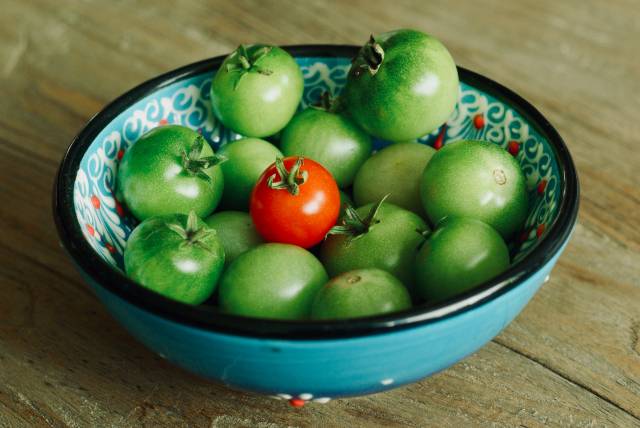It’s the oft-recited estimate: one third of all food is wasted across the world. Not to mention the farmers’ work, fertilisers, pesticides and fuel used to grow it, the energy to transport it and, finally, the impacts of its disposal too. In Europe, 88 million tonnes, 95-115kg per capita per year is lost, costing €143 billion (European Commission) and comprising 8% of global greenhouse gas (GHG) emissions (FAO). Yet for every Euro invested in Food Waste reduction, a city saves €8. From plastic packaging to participation, what is the best way to implement a sustainable food waste strategy? Our case studies include the city of Bruges, Belgium, who implemented a radical strategy to slash their waste to reach zero food waste status.
From food waste fiasco to fun opportunity
Facing the food waste challenge plays a significant role in attaining climate goals globally. Indeed, as stated in the comprehensive study Drawdown, reducing food waste is ranked as the third most effective solution to reduce GHG emissions, even before solar farms and plant-rich diets. “It is also an easy and fun topic to work on [...] Citizens even contact me because they have too many courgettes and want to make sure they get eaten. This would have never happened 6 years ago.” says Mieke Hoste, Bruges’ alderwoman of environment.
Awareness first
Whether using a method as simple as disposing of organic waste in separate clear bags or a high tech intelligent camera that identifies the exact type, amount and cost of food being wasted, diagnosing the problem is the vital first step to fight food waste. As stated by food waste organisation FoodWIN, knowledge leads to action. Initially not included in their urban food strategy, after talking to food waste expert and activist Tristram Stuart, Bruges used Foodwin’s food waste calculator and was convinced by the “huge” costs - equivalent financially to investing in solar panels. Restaurants, citizens, retail and healthcare were found to create the most waste.
The (zero) waste hierarchy
Organic waste can be used as a source of bioenergy. However, the susustainability of this type of energy is contested. Zero Waste Europe best practise states a reduction of organic waste should be prioritised through improved labelling, portioning, awareness and educational campaigns around food waste and home composting. Unavoidable (excess) edible food should be targeted at human consumption first i.e. donated to social organisations, as done by Bruges, or otherwise for animal feed. Non-edible organic waste can be composted and used as fertiliser for agriculture, soil restoration and carbon sequestration; garden trimmings, discarded food and food-soiled paper in low-tech small-scale process sites whenever possible. In larger areas, composting could be centralised with more technologically advanced systems. Alternatively, depending on local circumstances and nitrogen levels in the soil, non-edible organic waste should be used to produce biogas through Anaerobic Digestion, a truly renewable source of energy and soil enhancer. If there is any organic waste within the residual waste stream, Material Recovery – Biological Treatment (MRBT) allows for the recovery of dry materials for further recycling and stabilizes the organic fraction prior to landfilling, with a composting-like process. Landfill and incineration are the least preferable, last resort option.
Participation and cocreation
In Bruges, a participatory approach increased awareness and ensured the involvement of citizens, e.g. via the creation of Bruges Food Lab - a local stakeholder council on sustainable food which includes organisations like social grocery stores and restaurants that redistribute surplus food, and via a crowdsourcing day to shape the urban food strategy, organise redistribution and reduction of surplus in public organisations. Bruges is the first city in Belgium taking the commitment to only use sustainable food at events. An annual food festival also “fed the 5000” with food waste; further boosting awareness.
Collaboration and communication of organisations
From 2017, Bruges started to focus on different sectors such as hospitals, resulting in food waste reductions of up to 43%. Communication between the different services of an elderly home or hospital for example was crucial to cocreate a system to serve food right away to ensure freshness. Too Good to Go is an app that allows shops and supermarkets to sell surplus food for a significantly reduced price, and the city is planning to launch a logistical platform to help it reach social projects via car or bike. UrbanWINS’ pilot project in Cremona similarly saw surplus food distributed by bike to families in need, an app created advertising end of day discounts at eateries, and a second hand/vintage market.
Fighting food waste: is plastic packaging a help or a hindrance?
The linked challenges of food waste and plastic packaging waste must be tackled together, as stated in the Institute for European Environmental Policy (IEEP) Report UNWRAPPED. Aside from health and unknown chemical migration risks associated, they found plastic packaging to increase food waste overall. Practises such as trimming to fit packaging and multipacks for example were found to cancel out the benefits of preservation of foods. They also present solutions such as laser marking goods, which produces 1% carbon emissions of a typical plastic sticker.
Conclusion
Ultimately, energy policies for a low-carbon economy should progressively move away from extracting as much energy as possible from waste - such as energy from biomass - and instead increase measures to preserve the embedded energy in products, a far more efficient and sustainable approach to resource use. In Bruges, all government departments now work within a sustainable food framework, setting the foundation for zero food waste overall. Going forward, they plan to focus more on citizens and restaurants who have the biggest impact.




